Operation Felix, the German plan to capture Gibraltar in 1940 during World War 2
By Nick Nutter | Updated 15 Mar 2022 | Gibraltar | History |
Login to add to YOUR Favourites or Read Later
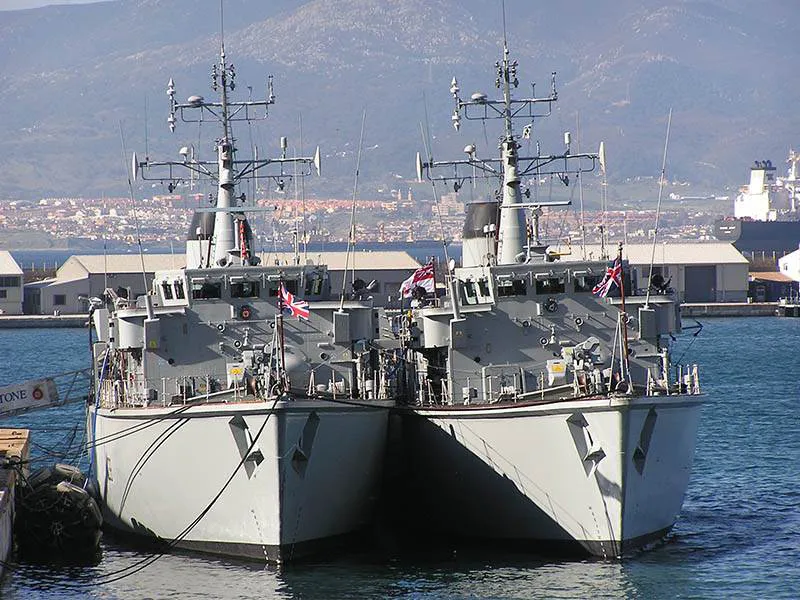
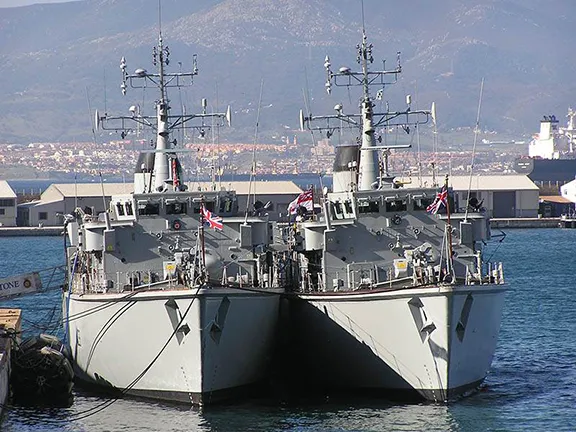
Naval base Gibraltar
General Franco could never have been called a friend to Britain but it is through his actions, or rather lack of them, that Gibraltar, still an important strategic naval base, remains in British hands today. On the 26th of June 1940, during the Second World War, France surrendered to Germany.
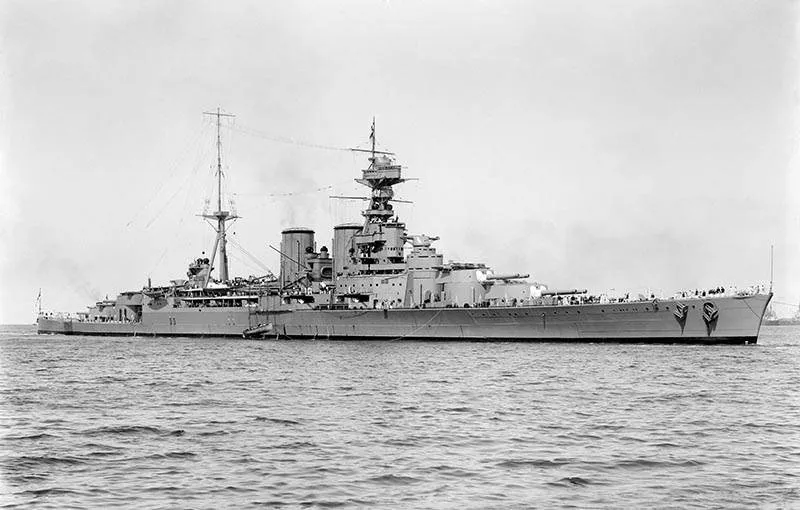
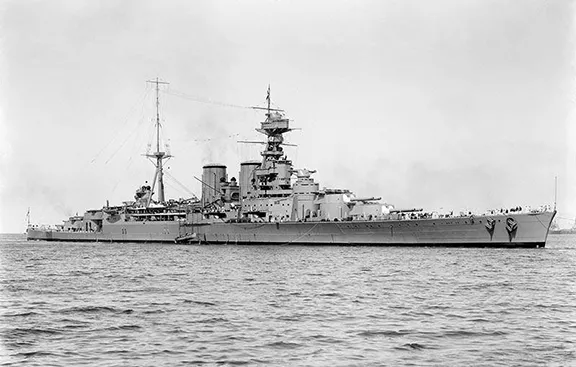
HMS Hood Force H
It immediately became imperative that a naval force be assembled that could dominate the western Mediterranean. Force H, based at Gibraltar, consisted of the battleships HMS Valiant and HMS Resolution, the aircraft carrier Ark Royal that, in 1941, sank off Estepona following a torpedo attack by the German submarine U 81, the Flagship of Force H, the battlecruiser HMS Hood, sunk by the Bismark in May 1941, the cruisers HMS Arethusa and HMS Enterprise along with eleven destroyers.
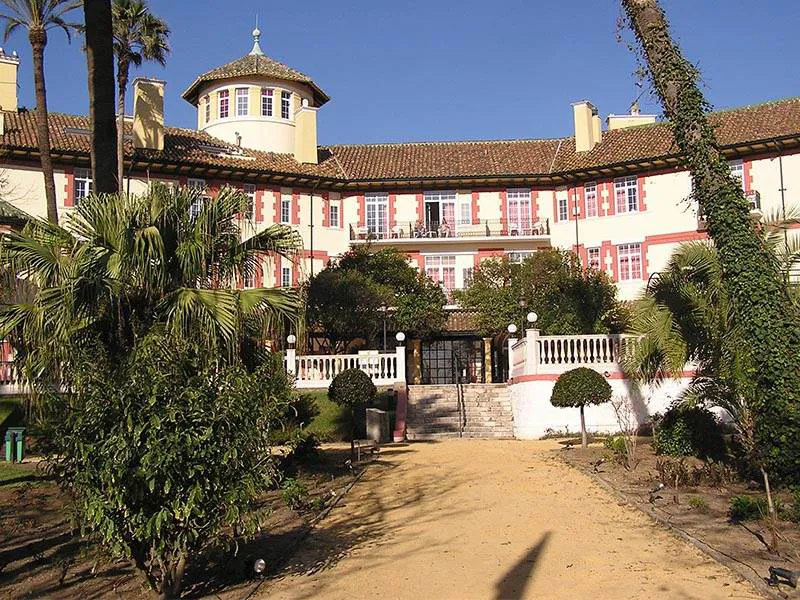
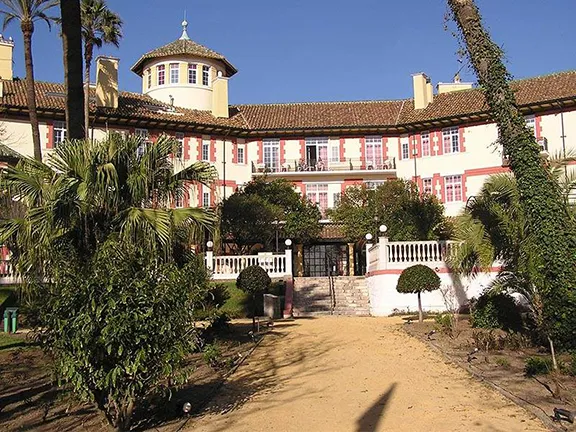
Princessa Kristina Hotel Algeciras
They were soon in action. Following the armistice with Germany, the French Fleet, then the second-largest force of capital ships after the Royal Navy, came under the control of the pro-German Vichy Government. On July 3rd 1940 Force H opened fire on the French fleet anchored at Mers el-Kebir; there could be no possibility of the French fleet falling into German hands. Not unnaturally the French were a little put out and the Vichy controlled French Air Force launched the first aerial attack against Gibraltar.
This action helped persuade Hitler that any large-scale actions in the Mediterranean would be hazardous whilst Britain held Gibraltar. By the 12th July, the initial planning document for the invasion of Gibraltar had been prepared and on the 22nd July a reconnaissance mission set off in civilian clothes with false passports to Madrid. There were a number of problems to solve before an invasion could take place, not least obtaining an agreement from Franco that German forces could travel across Spain.
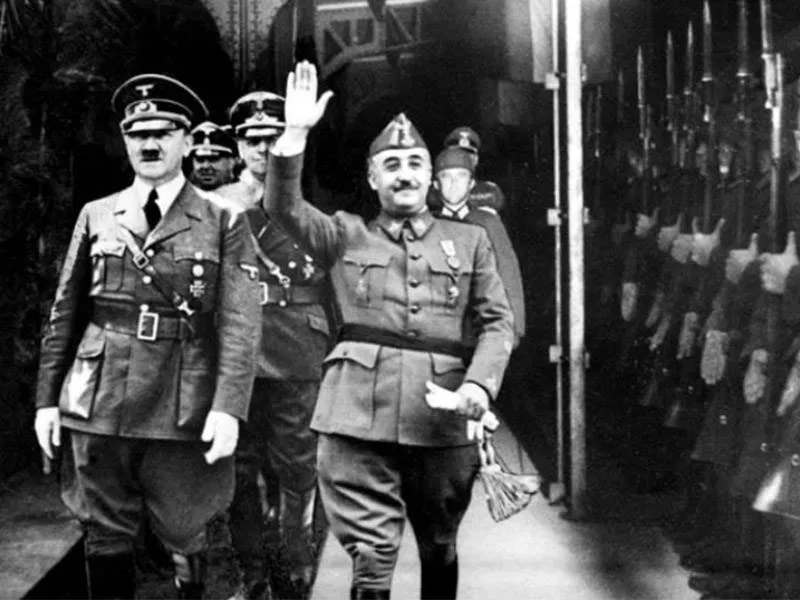
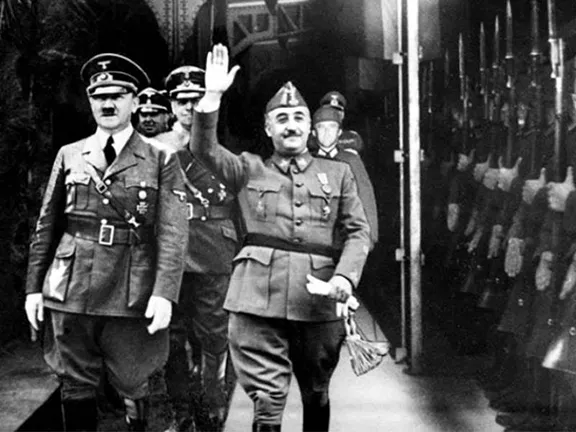
Hitler and Franco at Hendaye
Spain meanwhile was trying to recover from a civil war that had decimated the country and its economy. Much of the food and essential materials for Spain had to be imported from former colonies in South America. It was imperative that Spanish merchant ships and neutrals trading with Spain continue to travel safely across the Atlantic. Franco was well aware that if he allowed German forces to use Spanish territory to attack Gibraltar his Atlantic lifeline would be cut. He was probably also aware that in the event that German forces entered Spain, Britain planned to capture, occupy and defend a large part of southwestern Spain to prevent long-range bombardment by German train carried artillery that had ranges up to 30 kilometres.
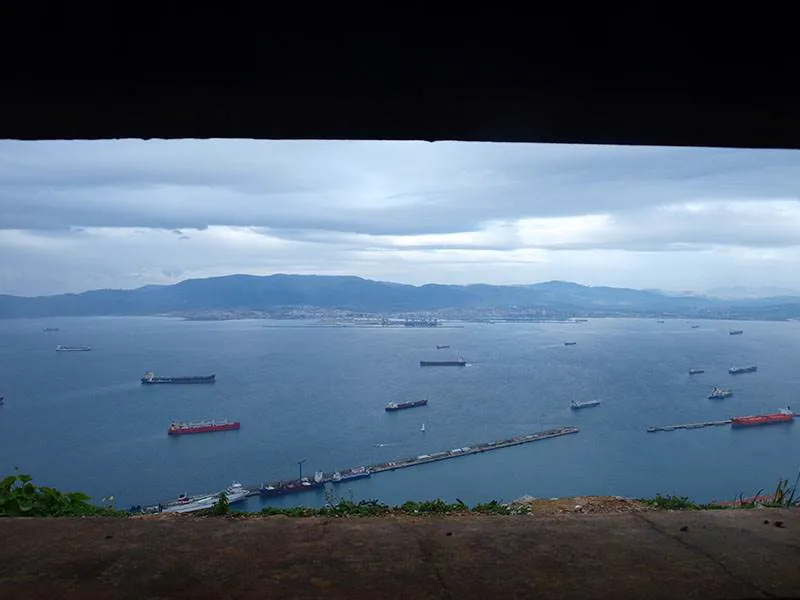
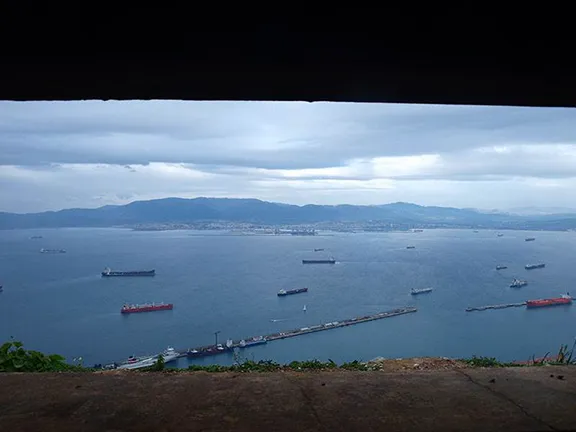
Gibraltar Bay
On the 23rd July Admiral Canaris, the leader of the covert mission met Franco and asked for Spanish help to prepare a map of the defences of Gibraltar in preparation for the proposed attack. Franco was not entirely happy with the scheme but allowed Canaris and his men to travel to Algeciras and set up reconnaissance points
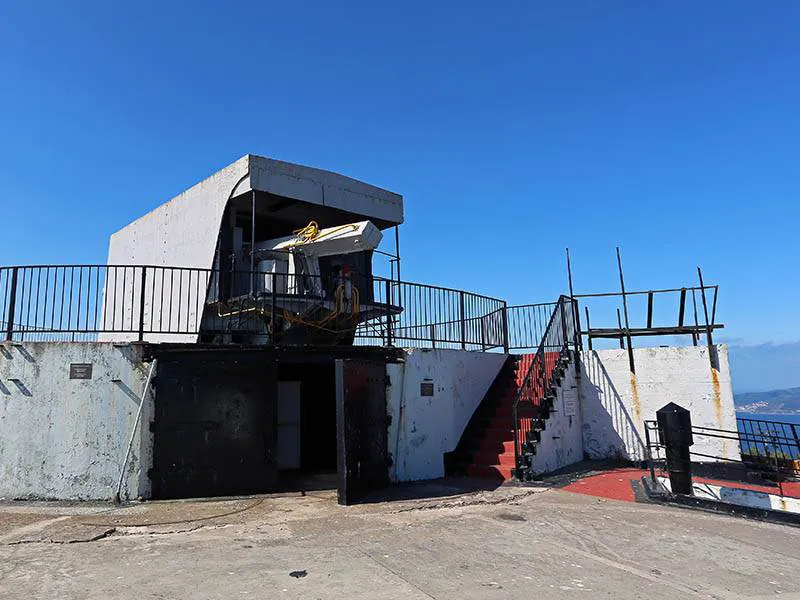
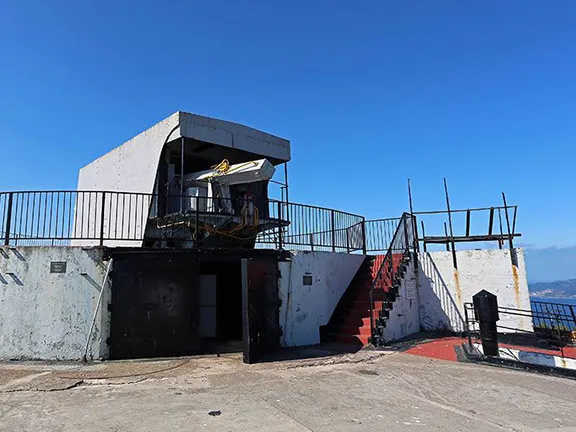
WW II gun emplacement Gibraltar
Meanwhile back in London Commander Ian Fleming, author of the James Bond books, working for Britain’s Naval Intelligence Division, was sent to Gibraltar where he helped set up ‘Operation Goldeneye’. This was a plan to monitor Spain in the event of an alliance between Franco and Germany and undertake sabotage operations within Spain.
The Hotel Reina Cristina in Algeciras became a hotbed of spies, both German and allied. The Germans even converted some of the bathrooms in their en suite rooms to darkrooms to develop their film of Gibraltar taken from the same room’s balconies. Along the coast road to La Linea, soon dubbed ‘Spy Row’ by the allies on Gibraltar, the villas Leon, San Luis, Isabel and Haus Kellerall had intelligence officers installed to observe the Rock.
In La Linea itself the Spanish commander’s office was used to observe the northern defences and the western face was watched from the Punta Carnero lighthouse. Initial results were not encouraging. A surprise attack was considered impossible. Gliders or paratroopers could not be used due to the variable air currents over the Rock and the only land access was via a narrow peninsula heavily mined and covered by artillery pieces. Furthermore, Canaris returned to Berlin with the impression that General Franco was at best ambivalent about giving permission for the attack.
After returning to Berlin the reconnaissance group put together a detailed plan to take Gibraltar. The minimum requirement to ensure the success of a land invasion was considered to be a force consisting of two infantry regiments, one of which should be a mountain unit, one engineer construction battalion, two combat engineering battalions, a special company of mine experts and twelve regiments of artillery with 167 guns.
On August 14th Hitler gave his approval for the Gibraltar operation and gave it the codename Operation Felix. At that time Operation Felix was just one operation within the overall plan, Operation Sealion, to invade Britain and remove the British from the war. To succeed with Felix Hitler knew he had to have Franco’s permission. Franco meanwhile was asking Germany for supplies of grain, fuel and other materials, well aware of the threat to his Atlantic lifeline and indicating that he would only give permission for an attack on Gibraltar if Germany defeated Britain. By late September 1940, Hitler had postponed his invasion of Britain and had to provide Franco with more incentive.
On the 23rd October Hitler met Franco at the Franco Spanish border at Hendaye, near San Sebastian. At this crucial meeting, Hitler offered to return Gibraltar to Spain at the end of the war. Franco continued to demand considerable material to sustain his already war-ravaged country and would not give his consent. Notwithstanding that decision, plans within Germany were refined and a possible date during mid-December was put forward for the attack and reconnaissance of Gibraltar continued. Duplicates of the Rock’s defences were built in the Jura Mountains in the Besancon area and the 1st Mountain Division started training. On the 12th November 1940, Fuhrer Directive Number 18 included his intentions for Operation Felix
Whether Hitler would have ignored Spanish neutrality is an issue still debated amongst historians but events were conspiring against him. At the end of October, Italy had made an unwise decision to attack Greece and had to be supported by their ally, Germany. Hitler was also starting to consider an attack on Russia that would not leave him enough troops for Operation Felix. In December General Halder briefed Hitler that the campaign would last four weeks following the 38 days required to move troops through Spain. This would allow the troops to be released for other action by May, well in time for the attack on Russia due to start in June.
A last attempt was made to persuade Franco to allow a German incursion into Spain to take place on the 10th January 1941 and an assault on Gibraltar commencing on February 4th or 5th. Admiral Canaris, in Madrid, failed to get the agreement he wanted even though he promised that the supplies Franco demanded would start to flow into Spain as soon as the first German soldier crossed the border. Franco again declared he would only enter the war when Britain’s collapse was imminent
This final decision effectively brought an end to Felix. By the end of December Hitler had already decided to attack Russia the following summer and his preoccupation with that campaign caused him to make some curious decisions that effectively lost him the war. Towards the end of 1940, the allies were starting to flex their muscles in Libya, East Africa and Greece. Admiral Raeder pointed out that the only way Britain could continue those movements was if they retained bases in the Mediterranean. In his opinion, the only response should be the capture of Gibraltar. Whilst Hitler agreed he had already decided to commit his forces to the Russian campaign rather than consolidate his existing positions.
So, in December 1940, Gibraltar was given a breathing space that was used to increase the impregnability of the fortress and allow the allies to create a base from which to conduct operations in the Mediterranean theatre that would hasten the end of the war.